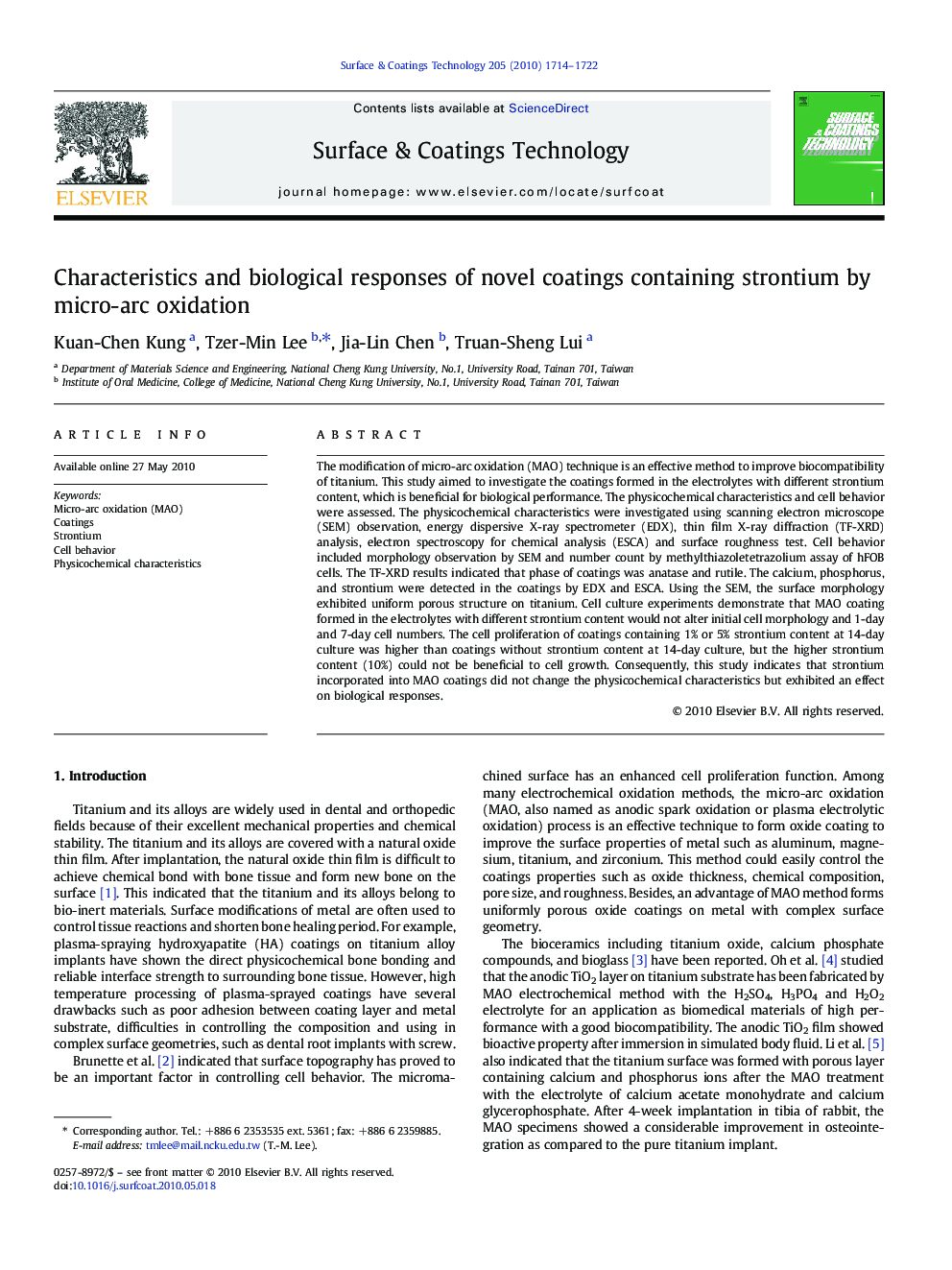| Article ID | Journal | Published Year | Pages | File Type |
|---|---|---|---|---|
| 1658920 | Surface and Coatings Technology | 2010 | 9 Pages |
The modification of micro-arc oxidation (MAO) technique is an effective method to improve biocompatibility of titanium. This study aimed to investigate the coatings formed in the electrolytes with different strontium content, which is beneficial for biological performance. The physicochemical characteristics and cell behavior were assessed. The physicochemical characteristics were investigated using scanning electron microscope (SEM) observation, energy dispersive X-ray spectrometer (EDX), thin film X-ray diffraction (TF-XRD) analysis, electron spectroscopy for chemical analysis (ESCA) and surface roughness test. Cell behavior included morphology observation by SEM and number count by methylthiazoletetrazolium assay of hFOB cells. The TF-XRD results indicated that phase of coatings was anatase and rutile. The calcium, phosphorus, and strontium were detected in the coatings by EDX and ESCA. Using the SEM, the surface morphology exhibited uniform porous structure on titanium. Cell culture experiments demonstrate that MAO coating formed in the electrolytes with different strontium content would not alter initial cell morphology and 1-day and 7-day cell numbers. The cell proliferation of coatings containing 1% or 5% strontium content at 14-day culture was higher than coatings without strontium content at 14-day culture, but the higher strontium content (10%) could not be beneficial to cell growth. Consequently, this study indicates that strontium incorporated into MAO coatings did not change the physicochemical characteristics but exhibited an effect on biological responses.
